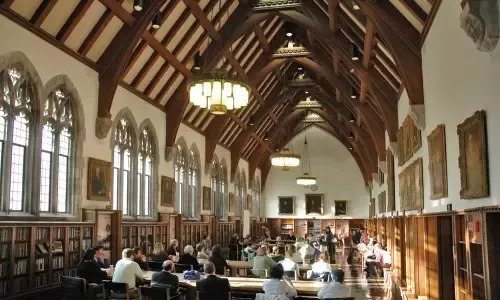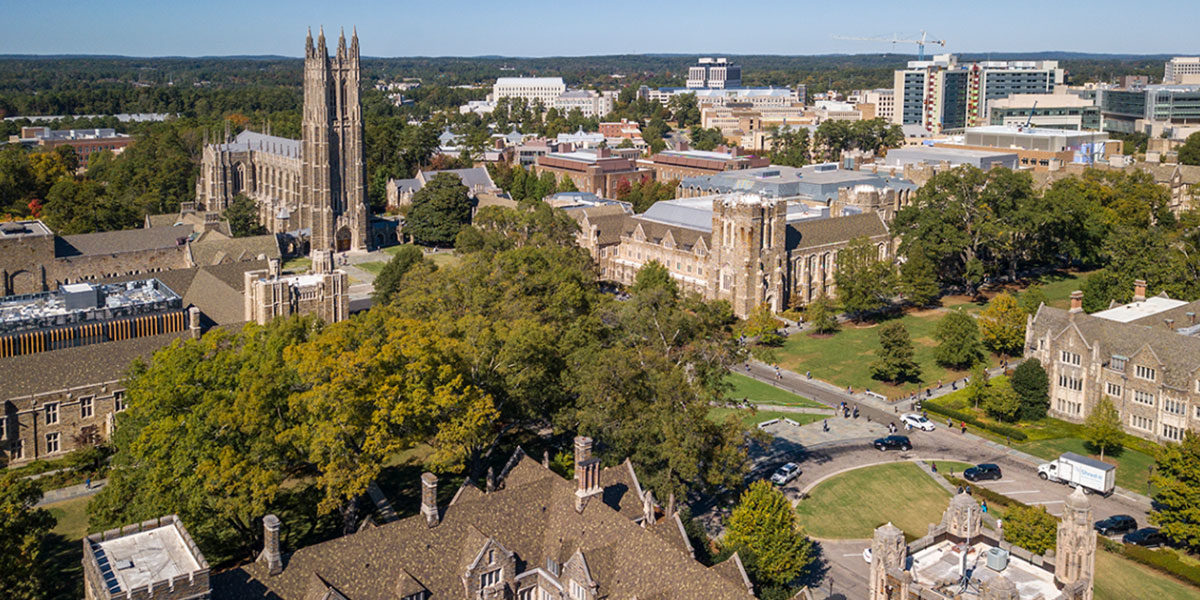I’d like to thank my dear friend Kartikay Goel, a current engineering student at Duke, for his precious insight that allowed me to create this resource.
Academic Life
- The university has a large undergraduate population, and a class sizes can vary, with introductory classes generally being the largest. The institution has a strong research focus and provides students with ample opportunity to form good relations with the faculty.
- It consists of two undergraduate schools: Trinity college of Arts and Sciences, the undergraduate liberal arts school, with about 85% of the undergraduates enrolled, and Pratt School of Engineering, with the remaining 15%, resulting in a smaller population.
- The two schools offer different experiences to students, with the liberal arts schools offering a broader scope of theoretical and hands-on learning, while the engineering school naturally offers a strong practical approach. Some of the more popular majors here are in the realms of engineering, economics, math, physics, biological sciences, public policy, environmental sciences, and political science.
- The Engineering Design and Communication class, taken as a freshman, is a hallmark of the Pratt School experience. This client-based class requires students of the school to collaborate with one another and develop technology for actual clients beyond the university.
- Another hallmark of the Duke experience is Duke Engage. Funded by the Gates Foundation, this programme provides students academic and other opportunities across the US and abroad for eight weeks over the summer.
- Both schools have different general education requirements, in addition to major requirements. Majors must be announced by the sophomore spring, but there is flexibility to change it afterwards.
- Students at Trinity Colleges must all take 2 classes each in 8 areas of study and inquiry, 1 to 3 classes in a foreign language, 2 research courses, and 2 writing courses, in addition to 1 first-year seminar, and 2 small group classes. Many of these requirements overlap, i.e. one class can fulfil a few of these requirements simultaneously.
- Students at Pratt School must take 1 writing class, 5 classes in the arts and humanities, 5 math classes, 4 natural science classes, 2 physics classes, 1 natural science elective, and 4 classes in engineering sciences.
- Some of these requirements can be using AP credits or a placement test.
- Classes must be picked a little while before the beginning of each semester, with a two-week period to add/drop courses. Students can occasionally sit in on a class to decide whether they’d like to take it up, but the norm is to email the professor, requesting their permission for this.

A reading room at Duke’s Perkins Library
Life on Campus and Beyond

Durham, North Carolina
- The campus is divided into two main regions: the East Campus and the West Campus.
- The East Campus principally serves freshmen. It consists of freshman-dorms, its own library, some academic buildings for freshman-heavy classes, and the freshman dining-hall, Marketplace. This creates a environment where first-year students can take things at their own pace and interact closely with their peers.
- The West Campus principally serves the rest of the student population, with the upperclassman-housing, the rest of the academic buildings and libraries, and the dining network. Sophomores, juniors, and seniors live together on this side of the campus, though seniors also have the option of living off-campus, which many of them take. The dining experience on West Campus combines offers many options from cafes to grills and fine dining.
- Freshman housing and roommate assignments are largely random. The transition to sophomore housing, however, is different. One can make groups of as many as 6 people to live together in an upperclassman house. Greek life is also a prominent part of the campus, with many students choosing to join and live with fraternities and sororities.
- There are many opportunities to socialize with others on and off-campus, including dining halls, cafes, and parties. Indian students may find comfort in the numerous South Asian organizations on-campus, which hold celebrations for many major festivals of the subcontinent. There are dining options for Indian food both on and off-campus. Cultural organisations also include Indian music and dance groups. Though the number of international students from India is between 10 and 20 per year, Indian Americans form a large part of this community.
- Athletics, particularly basketball, are a big part of the school-spirit. The prime sporting events include Duke-UNC basketball game, which is preceded by the tradition of tenting. Groups must register with line monitors and live in actual tents for extended periods of time, with specific rules on rotation, in order to gain first preference for the most coveted stands.
- Students here come from all kinds of political backgrounds, and so there is a good mix of all political ideologies, ranging from the left to the right. Political correctness, however, is the norm, and there is administrative recourse for any incident of racism, homophobia, xenophobia, and other forms of discrimination, though overt instances of these are far from common.
- While some majors can be more competitive than others, the competition here is rather healthy and non-toxic. People are generally willing to help one another in classes and other matters.

